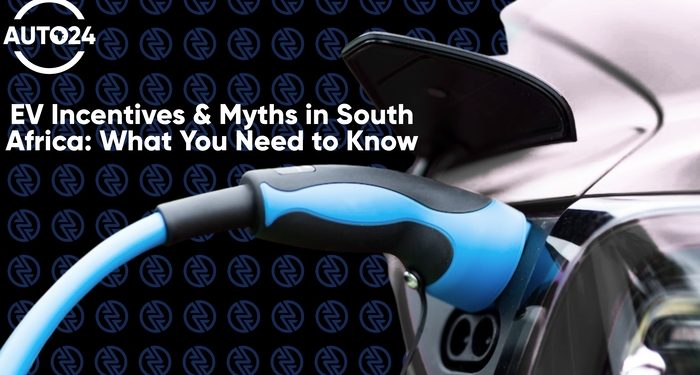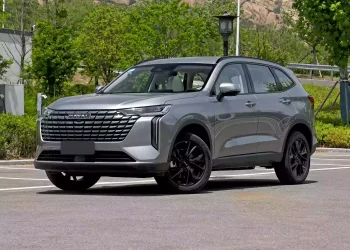Introduction: Plugging into the EV Conversation in Mzansi
Electric vehicles are taking the world by storm—but in South Africa, the buzz is still building. Between load-shedding, import duties, and a relatively new charging network, many locals are left wondering: is the switch to EVs really worth it here?
Let’s unpack the current EV incentives available in South Africa, break down where we’re headed, and dispel some of the most common myths standing in the way of greener mobility.
1. EVs in SA: Where We’re At
EV adoption is growing—but it’s still a niche market. Out of over half a million vehicles sold annually in South Africa, only a small fraction are electric. High prices, limited availability, and infrastructure gaps have slowed the transition.
However, recent policy shifts and interest from automakers are bringing change. Government white papers, private investment, and new players like BYD and GWM are starting to light up the EV scene.
2. Government Plans and Support for EVs
Here’s a breakdown of the main initiatives in play:
- Lower Import Duties (Pending): Proposed policy changes could reduce duties on EVs from 25% to match ICE rates (around 18%), making new models more affordable.
- EV White Paper: The national framework outlines key goals, including local production incentives, job creation, and emissions reduction.
- Manufacturing Drive: The push is on for SA to become an EV manufacturing hub—especially for right-hand-drive markets.
- Municipal Moves: Some metros like Cape Town are exploring EV fleet transitions and perks for private EVs (e.g., parking benefits).
Still to come:
- Direct consumer incentives
- Tax breaks for individual buyers
- Charging subsidies for homes and businesses
3. Busting the Most Persistent EV Myths
Let’s get real about the concerns we hear most often:
Myth: “EVs Are for the Rich Only”
It was once true, but that’s changing. EVs like the BYD Dolphin and GWM Ora start at more competitive prices. As local manufacturing ramps up and taxes drop, expect sub-R600k models to become the norm.
Myth: “You Can’t Find Charging Stations”
While rural areas still lag, major cities and interprovincial routes are increasingly covered. Apps like PlugShare make it easy to plan trips.
Myth: “Load-Shedding Makes EVs Useless”
Many owners charge at night or during off-peak hours. Plus, solar installations are on the rise, and hybrid EV options can be a bridge.
Myth: “EVs Aren’t Powerful Enough”
Torque is instant in EVs—great for city driving and overtaking. Models like the Volvo EX30 and BMW i4 deliver high performance without petrol.
Myth: “Batteries Don’t Last”
EV batteries are backed by strong warranties, and real-world usage shows they can last well beyond 10 years.
4. Cost Breakdown: EV vs Internal Combustion
Let’s look at a rough monthly comparison over 5 years:
- Fuel/Electricity: EV = R1,000–R1,800/month | Petrol = R2,200–R3,500/month
- Service & Maintenance: EV = R300–R500/month | ICE = R800–R1,500/month
- Insurance: Slightly higher for EVs, but decreasing with more competition
Though upfront costs are higher, long-term ownership costs favour EVs for many drivers.
5. Available EV Models in South Africa
Here’s what you can shop for today:
- Affordable: GWM Ora, BYD Dolphin, Mini SE
- Mid-Range: Volvo EX30, BMW iX1, Hyundai Kona Electric
- Luxury: Audi e-tron, BMW i7, Porsche Taycan
The list keeps growing as importers bring in more right-hand-drive options for our roads.
6. Charging Your EV: How and Where
The current landscape:
- Home Charging: Wallbox units (R20k–R40k) are the norm. Many pair with solar.
- Public Charging: GridCars, Rubicon, and car brands are rolling out fast-chargers nationwide.
- Fast-Charging: Up to 80% in 30–40 minutes on highways like the N1 and N3
Charging anxiety is decreasing as networks expand.
7. Hurdles to Overcome
For full adoption, South Africa must address:
- Price barriers: Bring down sticker prices
- Policy clarity: Finalise tax breaks and infrastructure strategy
- Consumer education: Promote awareness through public campaigns
- Energy reliability: Incentivise renewable-based charging
8. Looking Ahead: EVs in SA by 2030
Here’s where we could be headed:
- Entry-level EVs under R450,000
- Stronger local manufacturing and export economy
- Expanded charge coverage across all provinces
- More second-hand EV options and local resellers
The pieces are falling into place, and momentum is building.
Conclusion: Time to Rethink What You Drive?
EVs in South Africa are no longer a pipe dream. The cars are here, the policy is catching up, and the myths are slowly being put to rest. While the road to full adoption is still unfolding, there’s never been a better time to explore an electric future.
So, the next time you’re shopping for a car—maybe skip the fuel pump and plug in instead.





